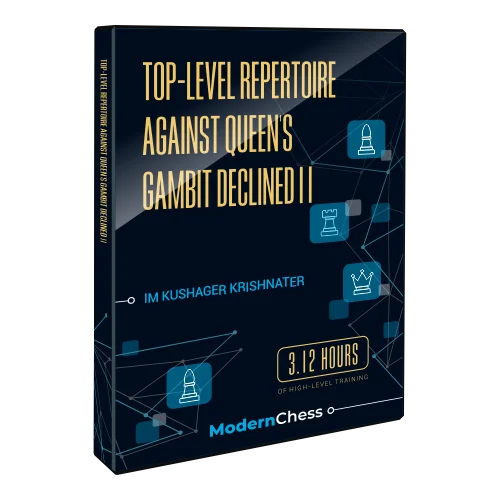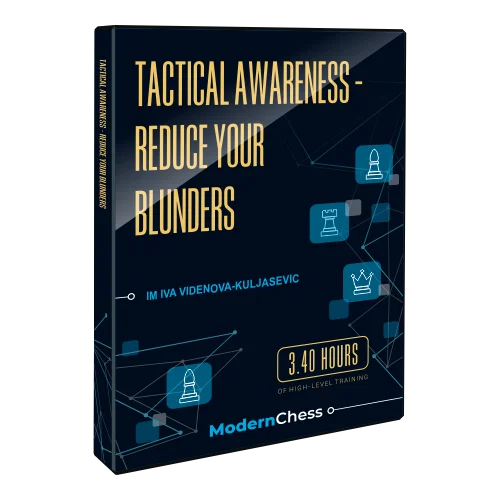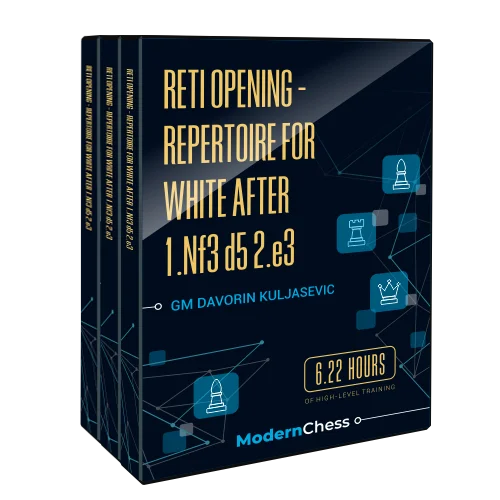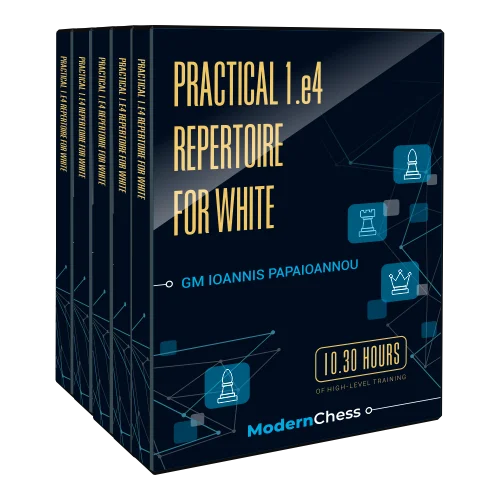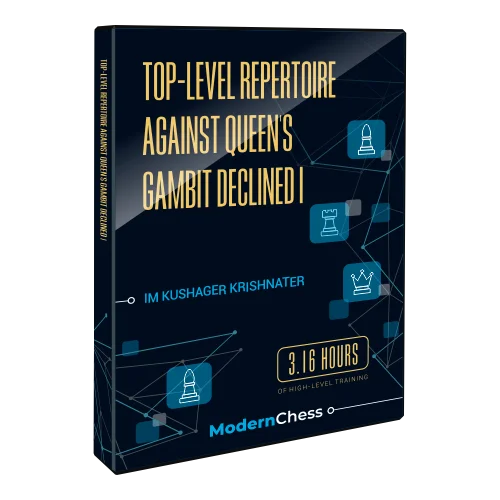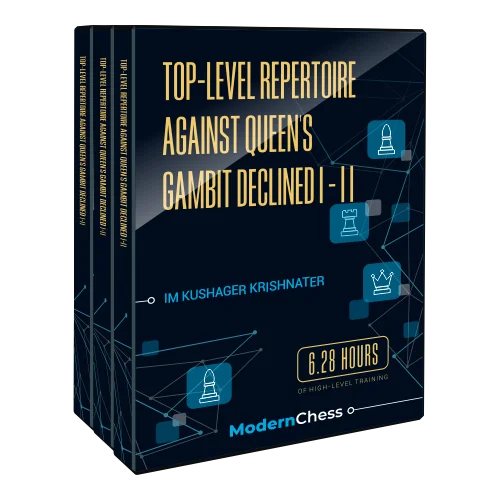In this course, IM Kushager Krishnater examines the following highly topical lines: Vienna Variation, Tarrasch Defence, Semi-Tarrasch Defence, and Queen's Gambit Declined with 4...Nbd7, and 4...h6.
We are happy to present the second and final part of the repertoire against Queen’s Gambit Declined proposed by IM Kushager Krishnater (click here for Part 1).
In this course, IM Krishnater examines the following highly topical lines: Vienna Variation, Tarrasch Defence, Semi-Tarrasch Defence, and Queen’s Gambit Declined with 4…Nbd7, and 4…h6.
True to his analytical approach, IM Krishnater usually goes for relatively unexplored but very challenging ideas. Besides the valuable novelties, he presents some extremely creative and fresh strategic concepts.
The current database consists of 16 theoretical chapters, 15 interactive test positions, a Memory Booster, and a Video Version (3 hours 12 mins).
Preview by the Author:
Welcome to the second part of the series on the Queen’s Gambit Declined. In this course, we will be covering the following topics- Vienna with …dxc4-Bb4/b5, the Semi-Tarrasch with …Nxd5, the Semi-Tarrasch with …cxd4, the Tarrasch Defence, QGD 4…Nbd7 & QGD 4…h6 for White. Let me take you through the key positions that will be a part of this course.
The starting position of the current database is being reached after 1.d4 Nf6 2.c4 e6 3.Nf3 d5 4.Nc3
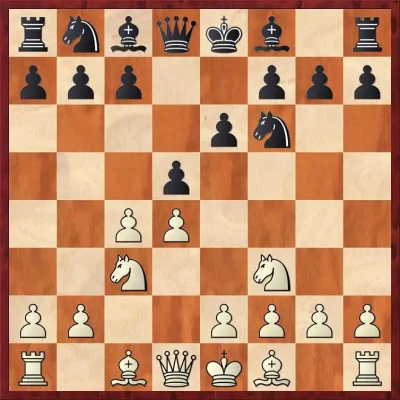
Let’s start the examination of this position with the move 4…c5.
With this move, Black challenges our centre. This advance may lead to the Semi-Tarrasch variations with 5.cxd5 cxd4 or 5…Nxd5. Black may also play 5…exd5 and opt for the Tarrasch Defence.
Against the Tarrasch Defence arising after 5.cxd5 exd5, I suggest the aggressive 6.Bg5
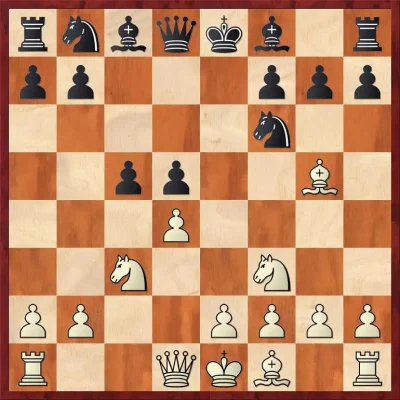
By deviating from the usual setups based on g2-g3, White will likely take the opponent out of his comfort zone. The critical position arises after 6…Be6 7.e3 c4 8.Be2 Bb4 9.0-0 0-0 10.Ne5
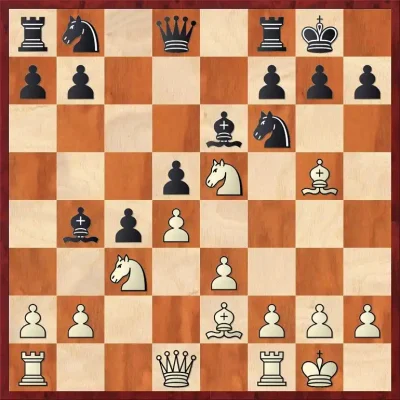
At this point, Black should already reckon with the march of the f-pawn. He has two continuations at his disposal – 10…Nbd7 and 10…Qa5. In both cases, White has excellent chances of fighting for an advantage.
A very important direction is 5…cxd4
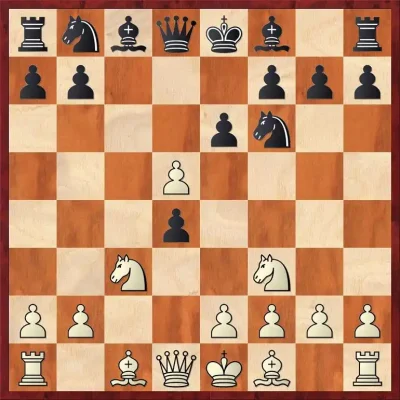
This is the modern way of playing. Black wants to ‘kill’ the game. However, this allows us to get a risk-free position. My recommendation is to play against the Isolated pawn with 6.Qxd4 exd5 7.Bg5 Be7 8.e3 0-0 9.Be2 h6 10.Bh4 Nc6 11.Qd3
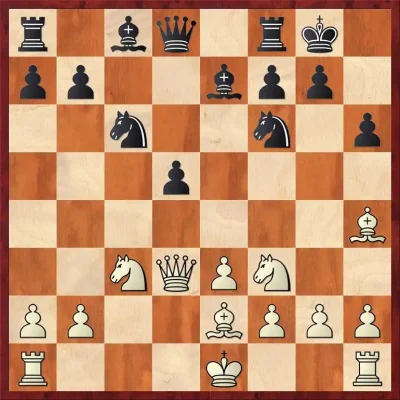
We reach an important branching point. Black has two plays of playing this position – 11…Be6 and 11…Qb6. In both cases, White has good practical chances of fighting for a small edge.
The main position of the Semi-Tarrasch Defence is reached after 5…Nxd5 6.e4 Nxc3 7.bxc3 cxd4 8.cxd4 Bb4+ 9.Bd2 Bxd2+ 10.Qxd2 0-0
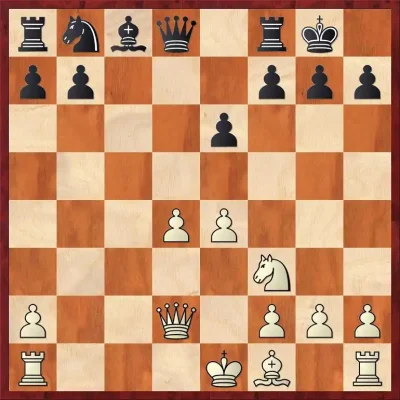
And here I recommend the extremely rare but practically testing 11.h4!?. With this move, White retains flexibility between Bd3/Bc4. My analysis shows that in this line, Black’s play is far from easy.
The first important crossroads in the Vienna Variation arises after 4…dxc4 5.e4
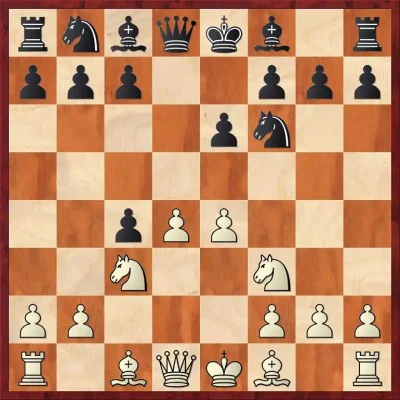
Gaining space and threatening Bxc4. Black now has two important ways to deal with this.
A modern approach to this position is to play 5…b5 6.e5 Nd5 7.Nxb5 Nb6
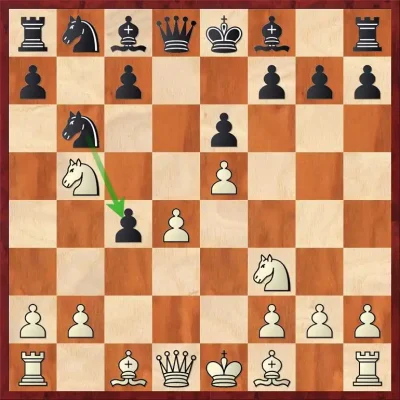
Defending the c4-pawn. Black wants to establish control over the light squares in this position with …Bb7. Here, my recommendation is to finish our development with 8.Be2 Nc6 9.Be3 Be7, followed by the strong prophylactic move 10.a3.
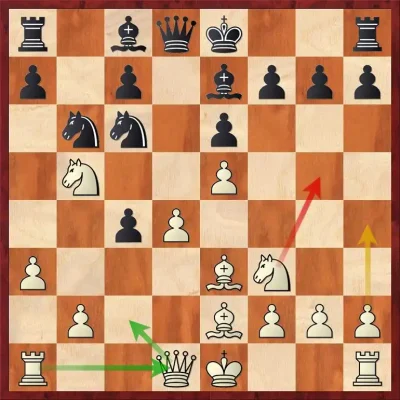
White has the intention of playing Qc2-Rd1 next. We may then castle and play against the weaknesses on c4/e4/c5, or initiate a kingside attack with h4/Ng5. White remains slightly better in these positions.
The Classical Vienna Variation approach is characterized by 5…Bb4. In this case, I suggest the gambit line 6.Bc4 Nxe4 7.0-0
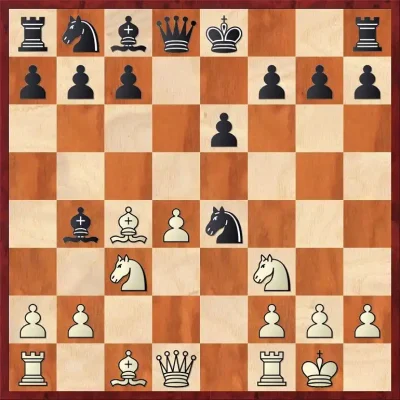
Our claim in such positions is that our lead in development and our space advantage compensate for the missing pawn. Black now has two important options, …Nxc3 and …Nf6. In both cases, we can pose annoying practical problems.
Another interesting and highly fashionable continuation is 4…Nbd7.
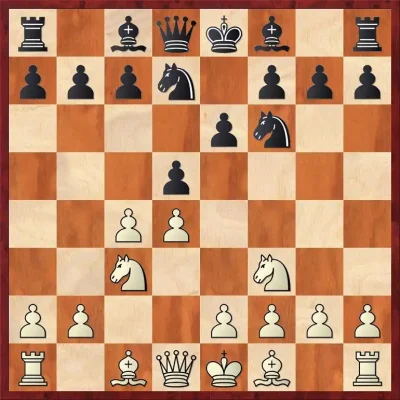
With Nbd7, Black wants to get a Ragozin without Qa4+ lines. My recommendation here is to play 5.Qc2!?. This is a rare, but strong move. We are being prophylactic against Black’s idea of …Bb4. Further analysis proves that Black should handle this position with a lot of caution.
Finally, I examine 4…h6.
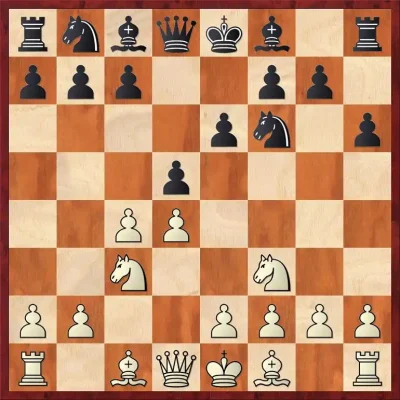
The idea of this is to stop us from playing Bg5. Black wants to obtain a strategically sound position that can be played without extensive theoretical knowledge.
At this point, I recommend 5.Bf4 when the principled 5…Bd6 is well met by 6.Qc1.
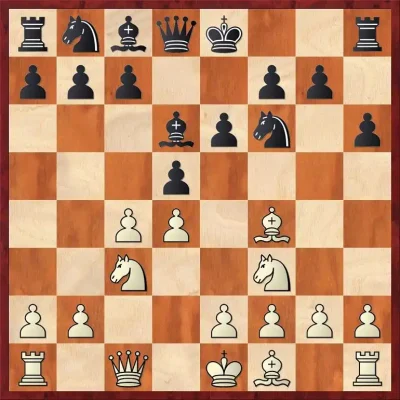
This rare and creative move has the idea of meeting 6…0-0 with 7.g4!. In this case, White would enjoy excellent attacking prospects.
All in all, I believe that my two-part series provides you with an excellent repertoire against Queen’s Gambit Declined. After studying the material, I am sure that you can test my ideas at any level.
Outline:
Introduction
Chapter 1 – Tarrasch – 10…Qa5 & sides
Chapter 2 – Tarrasch – 10…Nbd7
Chapter 3 – Semi Tarrasch – 5…cxd4- 10..h6-13…Be6
Chapter 4 – Semi Tarrasch – 5…cxd4- -13…Qxb2 & …g5
Chapter 5 – Semi-Tarrasch – 9… h6 10.Bh4 Be6!?
Chapter 6 – Semi Tarrasch – 5…Nxd5 13…Nd7
Chapter 7 – Semi Tarrasch – 5…Nxd5 13…Nc6/11…Nc6
Chapter 8 – 4…Nbd7 – 5.Qc2 c5 & sides
Chapter 9 – 4…Nbd7 – 5.Qc2 Bb4
Chapter 10 – 4…Nbd7 – 5…dxc4 6.e4 c5-Part I
Chapter 11 – 4…Nbd7 – 5.Qc2 – 5..dxc4 6.e4 c5 – 8…Ne5
Chapter 12 – 4…Nbd7 – 5.Qc2 dxc4 6.e4 Nb6 & sides
Chapter 13 – Vienna – 5.e4 b5!?
Chapter 14 – Vienna – 5.e4 Bb4 7.0-0 Nxc3
Chapter 15 – Vienna – 5.e4 Bb4 7.0-0 Nf6!?
Chapter 16 – 4…h6
About the Author:
IM Kushager Krishnater [2411 FIDE]
is a seasoned chess coach from India. For the last 3 years, he’s been guiding chess players of every skill level, from complete beginners to elite Super Grandmasters like Arjun Erigaisi and Vidit Gujarathi. Chatting about chess with folks from all over the spectrum has sharpened his insights on tailoring training to suit various playing strengths. As a coach, he’s all about helping players polish their natural game – whether they lean towards aggressive plays or prefer a more positional approach – while also buffing up any areas where they’re a bit shaky. His trophy cabinet’s got some serious wins like the Asian Youth U-18 Team Gold and an individual Silver in the Asian Youth U-18 Rapid.
